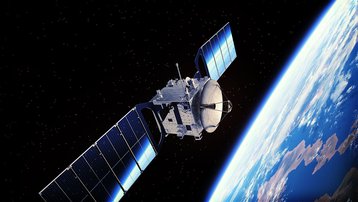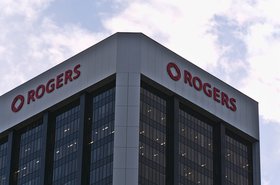Visualizations of Earth’s space debris resemble an ever-moving, ever-growing piece of chainmail. As more satellites are sent into space, the higher the risk of an accidental collision. And with more collisions, more debris is produced. The European Space Agency (ESA) said that around 40,000 objects are currently in Earth’s orbit, but their projections have shown that this number has and will continue to grow at an exponential rate.
Most debris is produced when the payload or the rocket to which a satellite is attached fragments, but satellites themselves can break under the wear and tear of the space environment. For instance, in October 2024, Intelsat-33e, operated by Luxembourgish-American operator Intelsat, disintegrated and released over 700 pieces of debris into geostationary orbit (GEO), which is where most communications satellites are placed.
It is hard to find an earthly analogue for the kind of danger posed by space debris to spacecraft. Everything is simply more consequential in space. The ESA says collisions producing debris as small as 1cm could disable a spacecraft and potentially cause further damage. Debris larger than 10cm – the length of a small spoon – could completely destroy a piece of spacecraft.
Neuraspace, a Portuguese space software company, is using Edge computing to give satellite operators better tools to navigate what will quickly become the world’s most dangerous highway. They track their customer’s satellites using containerized telescopes and publicly available data, process it, and then analyze it using machine learning powered by the cloud. Incubated in the Instituto Pedro Nunes – an innovation hub established by the University of Coimbra – and the ESA’s Business Incubator initiative, the company has been operating since 2022, and has since signed up clients including on clients like American satellite operator Spire, French satellite maker U-Space, and the European Space Agency.
Feel the force
For anyone who wants to send a satellite into space, the backbone of global space traffic management is currently provided by the US Space Force, which runs a platform called Space-Track that monitors and predicts potential collisions. When the system detects a chance that two objects may be getting too close to one another, it sends conjunction data messages to operators, who assess the threat and plan evasive manoeuvres if necessary.
But the problem, in the gingerly phrased words of Neuraspace’s senior orbit dynamics engineer Rob Arthur, is that Space-Track is “non-user-friendly.” CDMs consist of raw data, which operators have to parse in order to make sense of the information. A CDM is not a surefire guarantee of a collision – after all, ‘conjunction’, as defined in astronomy, is when two objects in space appear to be close together – and operators may get various CDMs pertaining to the same conjunction. Operators have to sift through repeat notifications in order to ascertain whether an object poses a credible threat to their satellite, which is time-consuming. Arthur adds: “Often you’ll have a warning, and then you’ve got another one and another one.”
Neuraspace’s solution is to create a separate platform that does a better job of interpreting that data. This means that the company analyzes Space-Track’s CDMs against data submitted by operators – Arthur said that Neuraspace currently tracks more than 450 spacecraft – alongside data from a number of companies that have optical, radar, or laser tracking facilities; and space weather nowcasts and forecasts. The company intends to integrate data from the EU Space Surveillance and Tracking platform next.
Despite being a software company, Neuraspace also gets data from its own telescopes, which is where the Edge comes in. In September 2024, Neuraspace installed its first telescope in a Portuguese military site, and delivered another to a Chilean telescope park in December that year.
But why would a software company need its own telescopes? Arthur gave three reasons. First, there are simply no private operators that operate large networks of telescopes and lease out usage at a fixed price point. Comparing it to “climate change or any other thing where it’s a tragedy of the commons,” he says: “An effort to make space more sustainable benefits everyone, but if you’re the only person who’s putting the resources in, then it doesn’t make enough difference.”
Miguel Santos, Neuraspace’s orbital dynamics engineer, adds that you have to think about it like air traffic management. “When there were just a few airplanes flying around there weren’t control towers, radar tracking everything, and controllers checking all the time if there was a risk of collision and so on,” he says. “As the industry matured, the traffic became so intense that you started needing something that would regulate all this traffic above you.”
Second, Neuraspace felt that it was necessary to have its own data. Arthur says: “If we want to use it for experimentation, testing, machine learning, there’s a limit as to how much you can pay for the right data.” Having its own telescope means that the company might also be able to sell that data in the future.
The third reason is supply chain management. “If you’re buying a service from another operator, obviously you’re at the whim of whether they’ve got capacity and things,” Arthur says, explaining that there currently aren’t many suitable telescopes for hire on the market. “Right at the moment, there’s just not that maturity of knowing exactly how much you have to pay and what you can get,” he adds.
Processing at the Edge
All of this data is then initially processed at the Edge. Neuraspace’s Edge capabilities sit in a white container located directly below the company’s orb-shaped telescopes. Santos says that the container is equipped with all the instrumentation that is required to operate a fully automated, remote satellite observation system.
“This includes the full optical assembly (telescope, mount, camera), meteorological instruments, environmental controls, and all IT infrastructure for local processing, monitoring and secure communications (firewalls, switches, servers),” he says.
“We process the images that we are taking in real time to generate the main product, which is the CDM.”
The telescope first takes a long series of images. Some astrometry – a term describing the measurement of the positions and movements of celestial objects – is done to find the exact position of the satellite by cross-referencing it to other stars and satellites. Sensors, which are also present in the container, track information like the quality of the sky and environmental variables. The two are then combined to generate “smaller files that contain the actual positions and brightness of the satellite”, which is then pushed onto the cloud for further analysis in relation to all of Neuraspace’s other data sources.
But once that is finished, data is sent from the container to the cloud in order to power computationally-intensive machine learning processes that enable the data to be properly analyzed. AWS is their chosen partner, and the hyperscaler helps them sift through mountains of data – Neuraspace has two telescopes, each of which can track a maximum of 500 objects that have hundreds of relevant measurements – and cross-check their trajectories with about 20,000 other objects, other CDMs and orbital data messages.
One might wonder why the Edge might be necessary, given Neuraspace’s inevitable usage on the cloud. Why not just use the cloud for everything? Santos’ reply was simple: “Our telescopes operate in remote locations where network bandwidth is limited, making it impractical to transfer large volumes of raw image data in real time.” The Edge also helps Neuraspace reduce data volume significantly before it is transmitted to AWS. Santos makes a point of mentioning photometric (referring to brightness) and astrometric (positional) data, which can be unwieldy if unprocessed.
Long before the ChatGPT hype-train barrelled through the collective consciousness, organizations interested in space tracking like Neuraspace had already realized the benefits of AI. But Arthur says that other uses for AI are being explored.
“One is this kind of classification/prioritization assistant, where [the AI] looks at all this conjunction data coming in, and it’s finding out which ones are worrying and which ones are not,” he says.
“Another one is an atmospheric model. One of the big uncertainties with satellites in low orbits is the kind of residual atmosphere, and it’s very hard to predict what the density is. So there are analytical, scientific-based, specific space models out there, but we’re looking at whether AI can actually be used alongside those. It’s incredibly complex as a human to do that – the equations and the physics to do that would be a nightmare, but maybe AI can pull out certain patterns.”
According to Neuraspace, interest in the product is coming from everywhere. Aside from private satellite operators, insurers might also be interested because the platform would enable them to assess and price risk in a clearer fashion. But they also see great interest from defence companies and various national air forces.
The geopolitics of space
As space becomes the newest geopolitical frontier, interest from governments and defence providers have spiked. After all, space infrastructure can be invaluable in times of crisis – Elon Musk’s Starlink satellite Internet service has kept Ukraine connected during the war with Russia, despite some controversy around the role of the company in the conflict – and the rise of new threats like deliberate interference means that Neuraspace sees a demand for services that can help cut through “dodgy data”.
The company has already begun moving in the direction of defense. In September 2024, it joined the European Military Integrated Space Situational Awareness and Recognition Capability project (EMISSARY). With €158m at its disposal, EMISSARY intends to develop autonomous European capabilities for Space Situational Awareness (SSA) for defence and security purposes.
Arthur says: “You’ve got situations where people may not want you to know what they’re doing, or they might be doing something that’s a bit shady. When you’ve got a large number of objects, and one of them suddenly does something very strange, machine learning can pick that out and flag it up and go: something weird is going on here. Then you can get your own analysts to look at it.”
What the operator chooses to do with the information provided on the platform is up to them. But in the future, Arthur said that the company might work more closely with providers to interface directly with the satellite.
“I think that’s definitely a longer-term ambition, and we’ve got maybe one or two things. One of the research projects we’re looking into is looking at what we should do on board a satellite to efficiently help its operations.”
But for now, Neuraspace will continue to operate outside of the satellite – and at the Edge.
More in Edge & IoT



Sponsored
Read the orginal article: https://www.datacenterdynamics.com/en/analysis/the-edge-of-the-universe/








